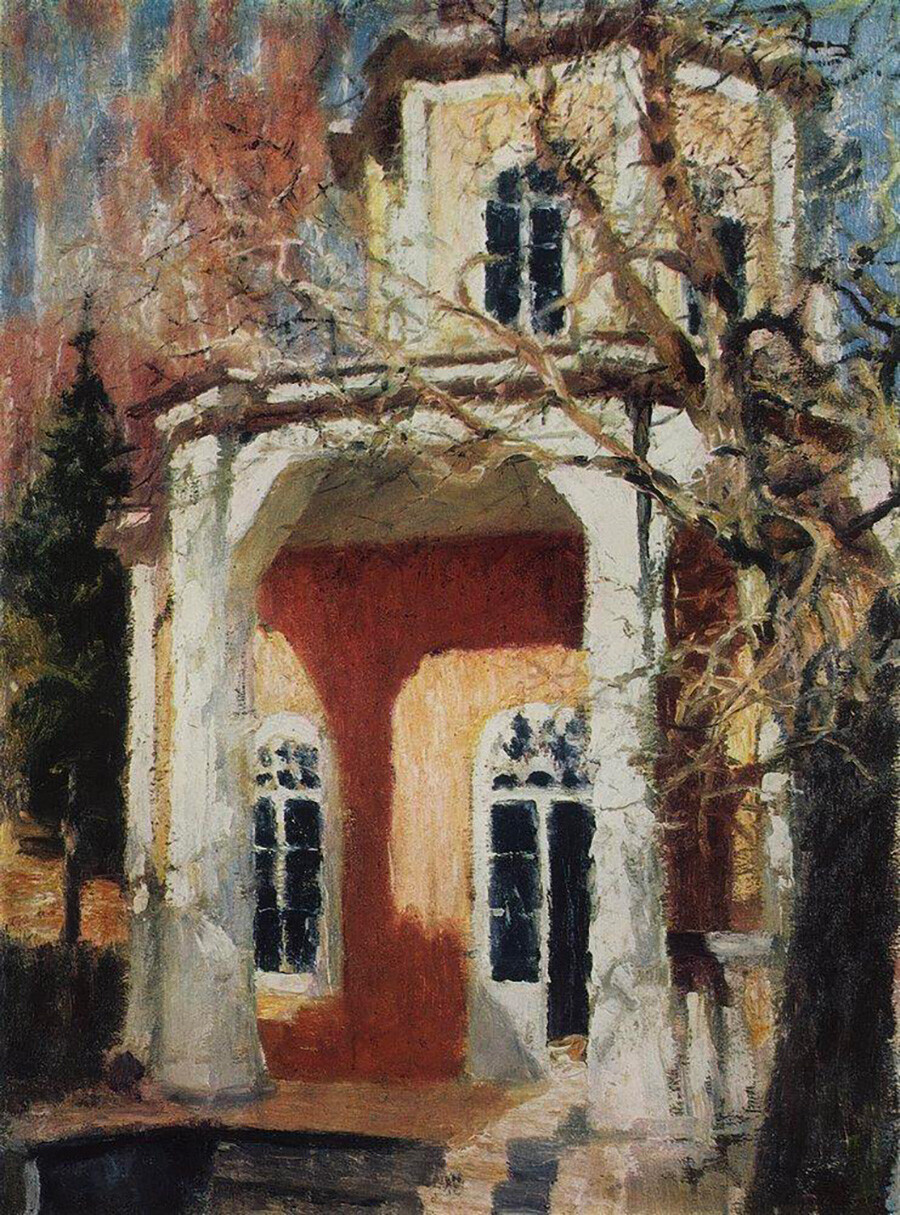
A pupil of Ilya Repin and graduate of the Imperial Academy of Arts, Grabar went to Europe in 1896 where he apprenticed in the studio of Anton Ažbe. Upon returning to Russia, he settled in Moscow. Grabar joined the modernist art movement, Mir Iskusstva (World of Art), and exhibited 10 paintings at its exhibition in 1902. One painting - "Ray of Sun" - was purchased by the State Tretyakov Gallery.
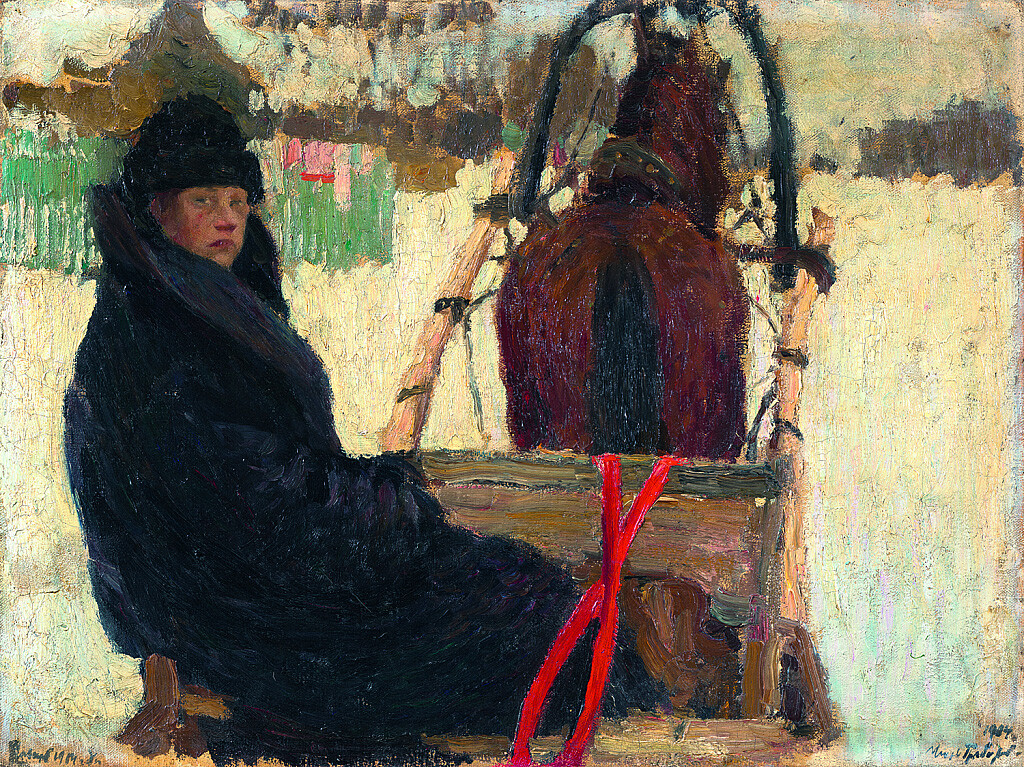
The artist often stayed in the house of his friend Nikolai Meshcherin in the town of Dugino near Moscow. The two would often go sketching together in nearby villages, and sometimes their coachmen served as models for paintings. One of those coachmen, for example, was Mishutka. Judging by the expression on his face, he was not pleased at having to sit and pose for a long time.

While working at Dugino, the artist would get up early and go sketching. One day, trying to capture split-second changes in natural light, he ended up lost in contemplation looking at a birch tree, and dropped a stick that he was holding. Picking up the stick, Grabar looked up and at that moment saw "a chiming of all the colors of the rainbow". Against the backdrop of a blue winter sky, the tree sparkled in its whiteness and its branches seemed to be dancing, creating ever-new subtleties of color. To preserve the angle he had discovered, the artist dug a trench in the snow and painted the picture standing inside it.
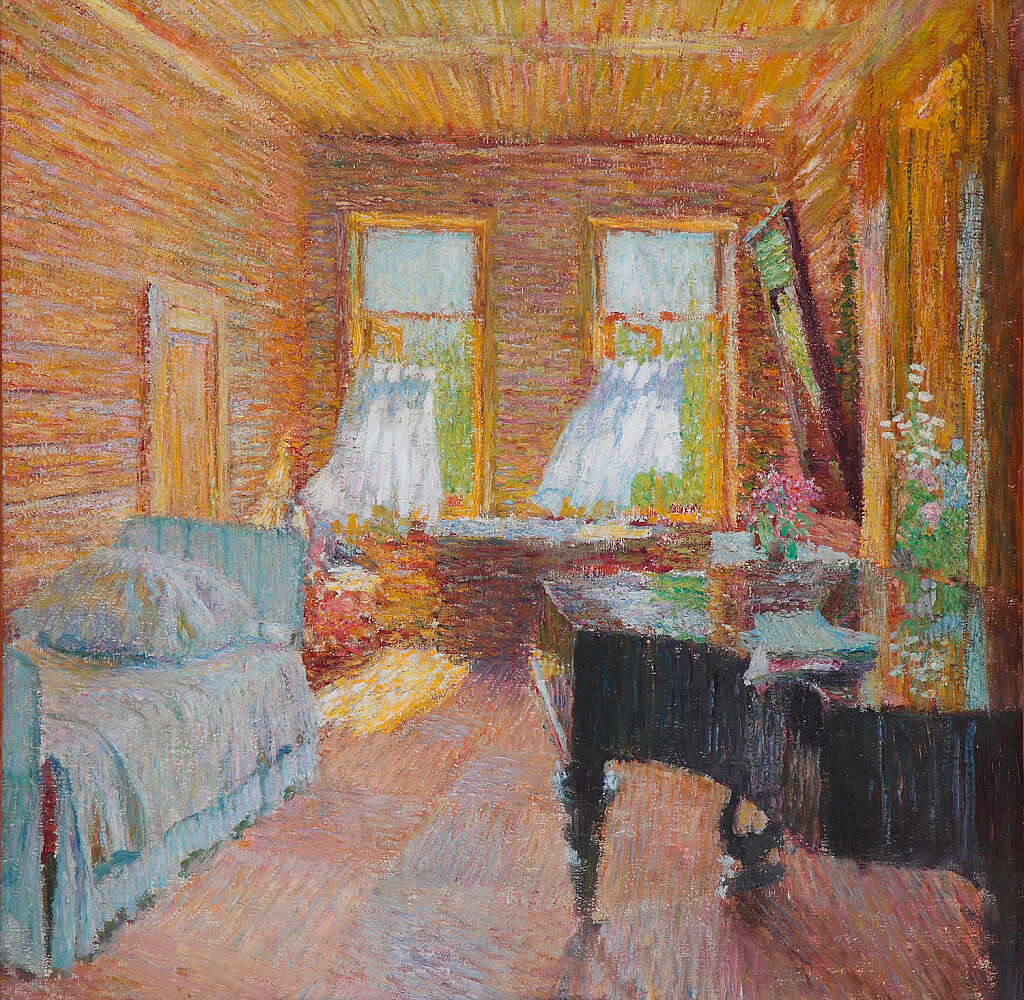
When he went to Paris in 1905, Grabar immersed himself in an in-depth study of Van Gogh's work. He was thoroughly captivated by Van Gogh's incredible technique and subsequently changed his approach to his own paintings. The result was "Spring Wind", a visible reminder of Van Gogh's "Bedroom in Arles". The legendary patron of the arts, Ivan Morozov, bought the painting for his private collection. Today, it’s on public display in Perm.
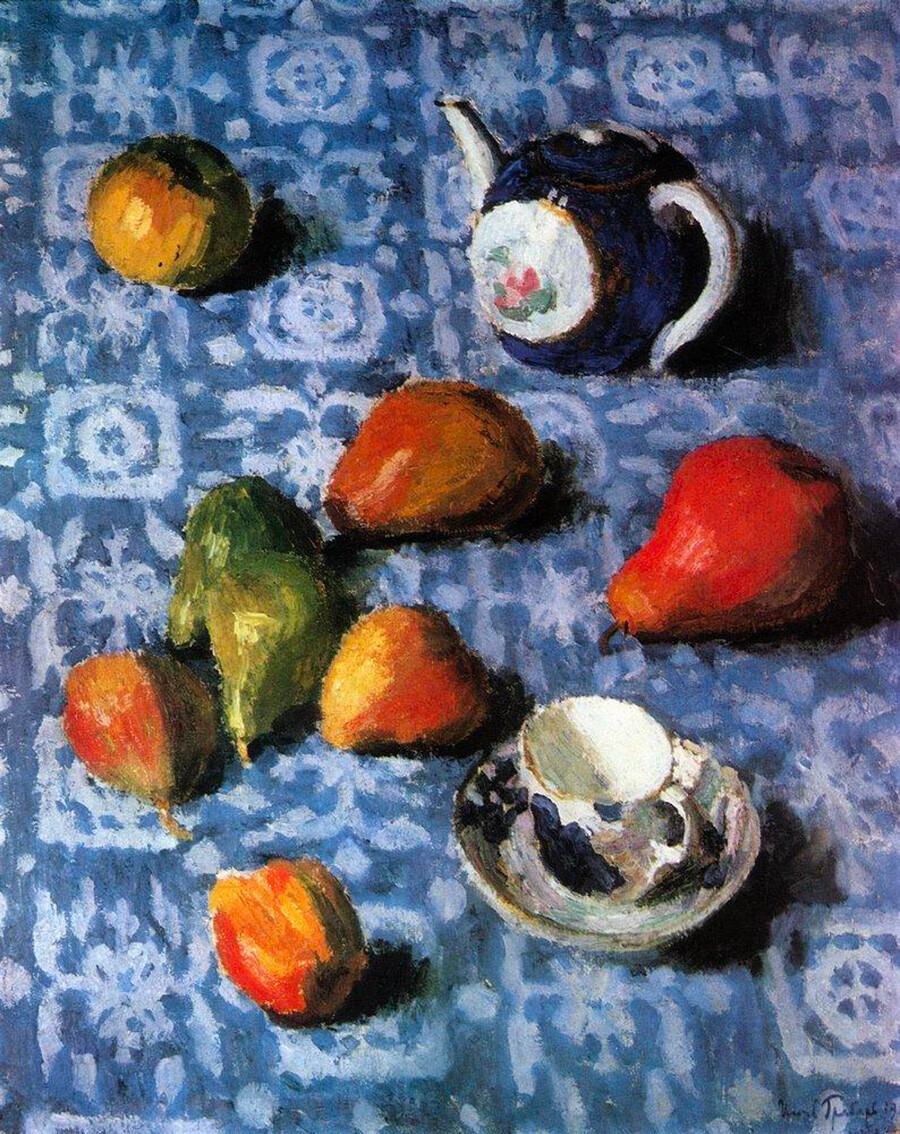
Work on the multi-volume "History of Russian Art" totally absorbed the artist. He traveled around the country in search of archival material. Eight volumes were published in 1908-1915. It went on to be one of the most important books about Russian art history. In 1913, Grabar became a trustee of the Tretyakov Gallery, where he carried out a large-scale exhibition of the museum's collection. At the Mir Iskusstva exhibition in 1915, Grabar showed his still-life, "Pears on a Blue Tablecloth", which was acquired by the Russian Academy of Arts for its museum.
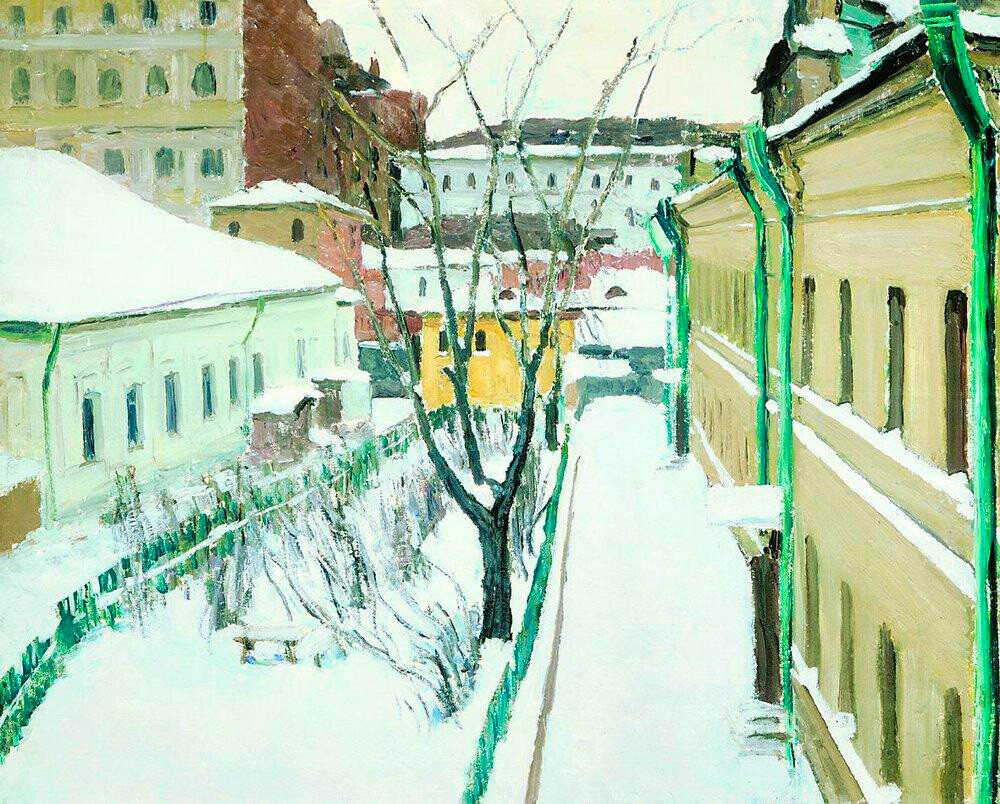
In the 1920s, Grabar, together with the writer Maxim Gorky, came up with the idea to establish an artists' village where creative people could both live and work. Buildings with workshops and apartments were built in Verkhnyaya Maslovka Street on the site of movie studios that had burnt down. The artist himself lived in one of the buildings.

Thanks to Grabar, it proved possible to preserve objects of Old Russian and Byzantine art following the Revolution. The Central Restoration Workshops - the first organization devoted to the preservation of cultural artifacts - opened at his initiative in 1918. In the 1920s, Grabar organized several exhibitions of Russian art abroad, including in the U.S. and Germany. At the end of the decade he quit all his official posts and concentrated on painting. At this time, he executed a whole series of portraits because he regarded this genre of painting as the highest form of art.
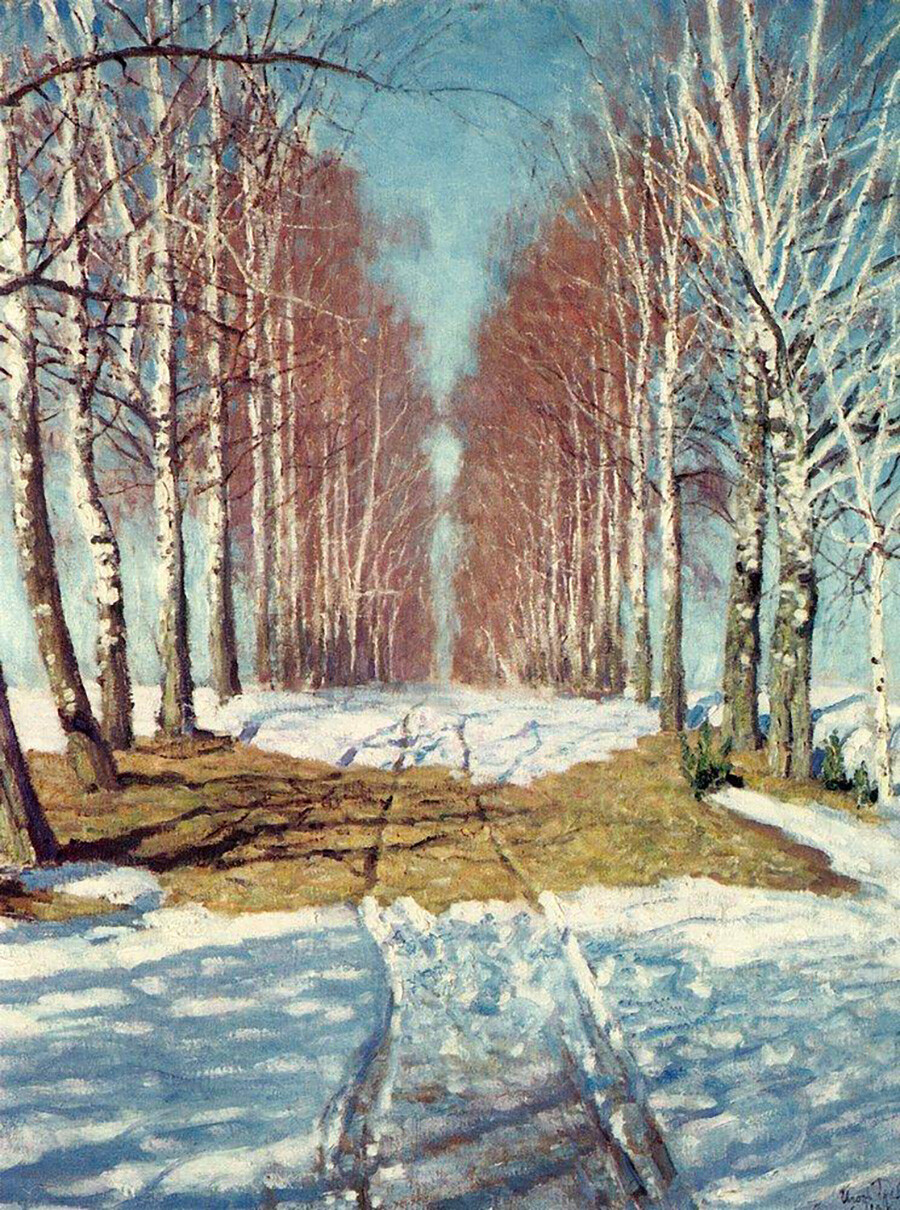
In the late 1930s, the artist started devoting his attention to a monograph of his great teacher, Ilya Repin. His autobiography, titled "My Life", also came out at this time. Grabar confided that art was virtually his only source of joy and sorrow, and the genuine essence of life. He returned again and again to one of his favorite subjects - birch trees in a summer or winter setting.
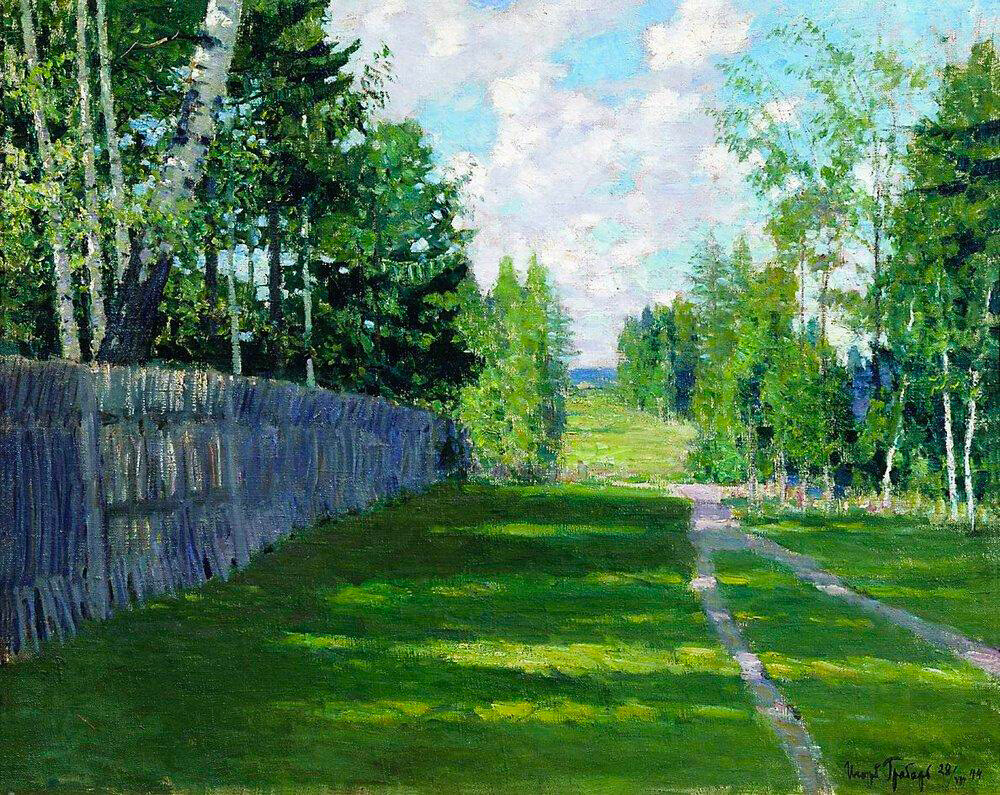
Starting in the 1930s, he had his artists' colony next to the famous Abramtsevo estate outside Moscow. Grabar designed and built his own dacha in the style of the Finnish Art Nouveau. At the colony, he continued to paint and to work on "The History of Russian Art". He later became director of the estate-museum.

In the late 1940s, Grabar set about the restoration of Moscow's medieval Andronikov Monastery and the opening of the Andrei Rublev Museum of Old Russian Art on its premises. Rublev had been a monk here, and he painted the walls of the Savior Cathedral and was buried here in 1428. Even though Grabar by then had strayed from Impressionism, he would still return to it. This landscape, painted "at five minutes to spring", is a reminder of what had always distinguished the artist's early paintings. A bright, sun-filled sky, scudding clouds - a sort of premonition of the new and farewell to the old.
The exhibition, "Igor Grabar - On the 150th Anniversary of His Birth", is on at the State Tretyakov Gallery until Feb 26, 2023.
Dear readers,
Our website and social media accounts are under threat of being restricted or banned, due to the current circumstances. So, to keep up with our latest content, simply do the following:
If using any of Russia Beyond's content, partly or in full, always provide an active hyperlink to the original material.
Subscribe
to our newsletter!
Get the week's best stories straight to your inbox